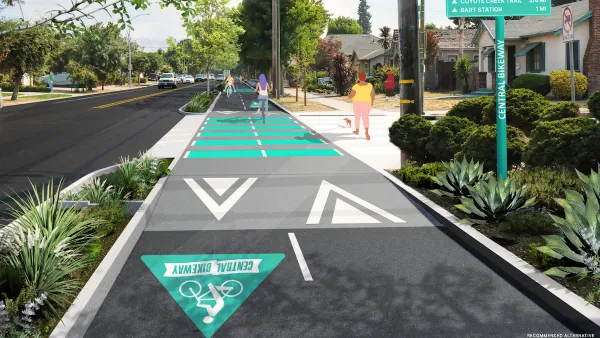‘Accessory commercial units’ were once common across U.S. towns and cities. Now, zoning regulations make them illegal in many places.

An article by Dave Olverson in Strong Towns describes the rise and fall—and potential renewed rise—of neighborhood grocery stores, otherwise known as corner stores, bodegas, or, in trendy planning parlance, “accessory commercial units” or ACUs.
Like their residential partner accessory dwelling units (ADUs), ACUs are the latest iteration of a planning trend that revives an old idea that was made illegal or impractical by modern zoning regulations.
“Beyond issues of equity, neighborhood shops that existed decades ago provided another benefit, one that a sterile term like ‘commercial unit’ doesn’t capture. Those business owners were an important part of the community.” Regardless of the terminology, Olverson hopes small neighborhood stores will be legalized in more places.
Olverson points out that bringing back more corner stores could make food and other essential items more accessible, particularly in neighborhoods lacking major grocery stores, reduce the need for driving, and provide opportunities for social interactions.
FULL STORY: The Death of the Neighborhood Grocery Store

Planetizen Federal Action Tracker
A weekly monitor of how Trump’s orders and actions are impacting planners and planning in America.

Silicon Valley ‘Bike Superhighway’ Awarded $14M State Grant
A Caltrans grant brings the 10-mile Central Bikeway project connecting Santa Clara and East San Jose closer to fruition.

Amtrak Cutting Jobs, Funding to High-Speed Rail
The agency plans to cut 10 percent of its workforce and has confirmed it will not fund new high-speed rail projects.

California Set to Increase Electric Truck Chargers by 25%
The California Transportation Commission approved funding for an additional 500 charging ports for electric trucks along some of the state’s busiest freight corridors.

21 Climate Resilience Projects Cancelled by the EPA
The federal government has pulled funding for at least 21 projects related to farming, food systems, and environmental justice to comply with one of Trump’s early executive orders.

Trump Executive Order on Homelessness Calls for Forced Institutionalization
The order seeks to remove legal precedents and consent decrees that prevent cities from moving unhoused people from the street to treatment centers.
Urban Design for Planners 1: Software Tools
This six-course series explores essential urban design concepts using open source software and equips planners with the tools they need to participate fully in the urban design process.
Planning for Universal Design
Learn the tools for implementing Universal Design in planning regulations.
Yukon Government
Caltrans
New Jersey Institute of Technology
Mpact (founded as Rail~Volution)
City of Camden Redevelopment Agency
City of Norman, Oklahoma
City of Portland
City of Laramie





























